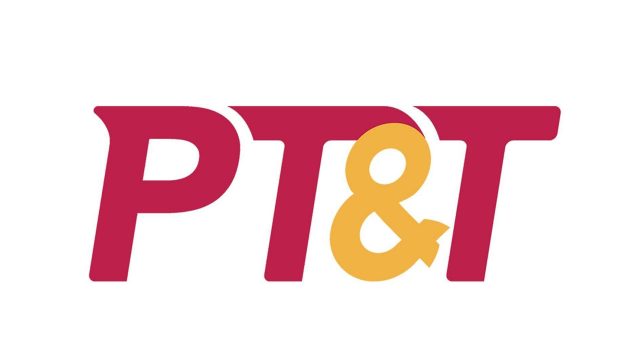FODC – First Orient Development and Construction Corp.: A Beacon of Innovation and Excellence in Philippine Construction
As the Philippine construction industry evolves, one company stands out for its commitment to quality, innovation, and excellence. In a landmark achievement, FODC — First Orient Development and Construction Corp. (FODCC) proudly marks its 20th anniversary this year, celebrating two decades of innovation and excellence in the construction industry. Under the leadership of Engr. Fred O. Dela Cruz, FODCC has established itself as a powerhouse in building and development, achieving notable milestones and expanding its horizon into real estate development.
A Legacy of Excellence
Founded in 2004, FODC — First Orient Development and Construction Corp. (FODCC) has steadily made its name to prominence in the construction sector, earning a reputation for delivering high-quality projects on time and within budget. The company’s success is underscored by its prestigious Philippine Contractors Accreditation Board (PCAB) with a “AAAA” category, and ISO 9001 certification, a testament to its superior capability and reliability in the industry.
Engr. Fred O. Dela Cruz, CEO and Chairman of FODCC, has been instrumental in steering the company to where it is now. His leadership and vision guided FODCC through numerous challenging projects and set new standards for construction excellence. The company has successfully completed a diverse range of projects, each of which demonstrates FODCC’s commitment to quality and innovation, thanks to his expertise.
Projects and Achievements
FODC — First Orient Development and Construction Corp. (FODCC) has been involved in several high-profile projects throughout the years, demonstrating its expertise and proficiency in a variety of industries.
The following are some projects that showcase FODCC’s extensive knowledge and versatility across various industries:
- Food Manufacturing
- 1.1. Max Group of Companies (No bia Food Manufacturing and Distribution Center)
- 1.2. Delimondo Food Processing Plant
- 1.3. ESFI Food Processing Plant
- High Rise Buildings and Residential Condominiums
- 2.1. Central Link Project (Office and Dormitory Bldg)
- 2.2. Grand Residences Cebu Tower 3 & Tower 4 (35-Storey Residential Condominium)
- 2.3. Covent Garden South Tower
- 2.4. Primavera Residences Tower 2
- Facilities
- 3.1. Pharmaceutical Facilities
- 3.1.1. FPDI Warehouse 2
- 3.1.2. UNILAB S-UMMO Warehouse
- 3.1.3. UNILAB Amherst Liquid Plant
- 3.2. Manufacturing Facilities
- 3.2.1. Tong Hsing Electronics Plant
- 3.2.2. MPOC Expansion Project
- 3.3. Industrial Plants
- 3.3.1. Belmont Softgel Pharma Plant
- 3.3.2. Jotun New Manufacturing Facility
- 3.3.3. CPF Aquaculture Feed Mill Plant
- 3.3.4. Majestic Industrial State
- 3.4. CEPALCO Administration Green Building
- 3.1. Pharmaceutical Facilities
- Commercial Centers
- 4.1. Metro Gaisano Cavite
- 4.2. Shopwise Store No.9
- 4.3. Shopwise Imus, Cavite
Currently, FODCC is working on a Data Center Project with Proxima Group in General Trias, Cavite. This collaboration highlights FODCC’s ongoing commitment to regional development and its ability to partner with other industry leaders to achieve shared goals.
Expanding Horizons: Real Estate Development and Sales Ventures
In a move that reflects its continued ambition and growth, FODCC recently expanded its operations by establishing its own real estate development company, FODC — Realty and Development Corp. This new venture marks an exciting chapter in the company’s history. The realty arm aims to leverage FODCC’s construction expertise to deliver exceptional Real Estate Development Projects.
FODC — Realty and Development Corp.’s first project, Sol Oriente Heights Condominium, is already generating sizable interest. This exclusive residential development located in the Carmona International City, promises to offer modern, high-quality living spaces that cater to the needs of its future residents.
Sol Oriente Heights Condominium is a multi-tower, mid-rise project, and single-loaded corridor with atrium design allowing for good ventilation and ambient light. Its pandemic-ready units have high-ceilings, and range from one to three bedrooms. The towers are meticulously constructed using PEB (Pre-Engineered Steel Building) technology, guaranteeing long-term durability and unparalleled structural integrity. Rest assured its residents can look forward to a safe, spacious and stylish haven they can call home.
The project reflects FODCC’s commitment to providing not just functional but also aesthetically pleasing and sustainable living environments.
Looking Ahead
As FODC — First Orient Development and Construction Corp. (FODCC) celebrates its 20 years of success, it is also looking forward to the future with optimism. The company is well-positioned to address new challenges and capitalize on emergent opportunities in the construction and real estate sectors as it enters its third decade.
The company’s track record of excellence, coupled with its strategic expansion into real estate development and sales, positions it for continued growth and innovation. FODCC is poised to continue its legacy of delivering high-quality construction and development solutions under the direction of Engr. Fred O. Dela Cruz.
FODCC’s 20-year journey is a remarkable story of dedication, innovation, and achievement. As it celebrates this significant milestone, the company reaffirms its commitment to excellence and looks forward to many more years of contributing to the growth and development of the Philippine construction industry.
INQUIRE NOW!
FODC — First Orient Development and Construction Corp. (FODCC)’s 20-year journey is a testimony to its unwavering commitment to excellence in the construction industry. FODCC’s vision and capability have been consistently demonstrated through its ambitious real estate ventures and significant infrastructure initiatives. As the company moves forward, it remains committed to building a better future through quality construction and innovative development.
For inquiries:
FODC — First Orient Development and Construction Corp. Head Office:
Address: Unit 702 & 704 7F Alabang Business Tower, 1216 Acacia Ave., Madrigal Business Park, Ayala Alabang, 1780 City of Muntinlupa, NCR, Fourth District Philippines.
Website: https://fodc.com.ph
Contact Number: (+632) 8809-3439 and (+632) 8809-3909
FODC — Realty and Development Corp. Sales Office:
Address: Sol Oriente Heights Condominium, Oaks Boulevard, Brgy. Lantic, Carmona, Cavite
Website: https://fodcrealty.com
Contact Number: (+639) 98-585-5478 (Smart); (+639) 17-110-1843 (Globe); (+6346) 890-9690 (PLDT)
Spotlight is BusinessWorld’s sponsored section that allows advertisers to amplify their brand and connect with BusinessWorld’s audience by publishing their stories on the BusinessWorld Web site. For more information, send an email to online@bworldonline.com.
Join us on Viber at https://bit.ly/3hv6bLA to get more updates and subscribe to BusinessWorld’s titles and get exclusive content through www.bworld-x.com.














